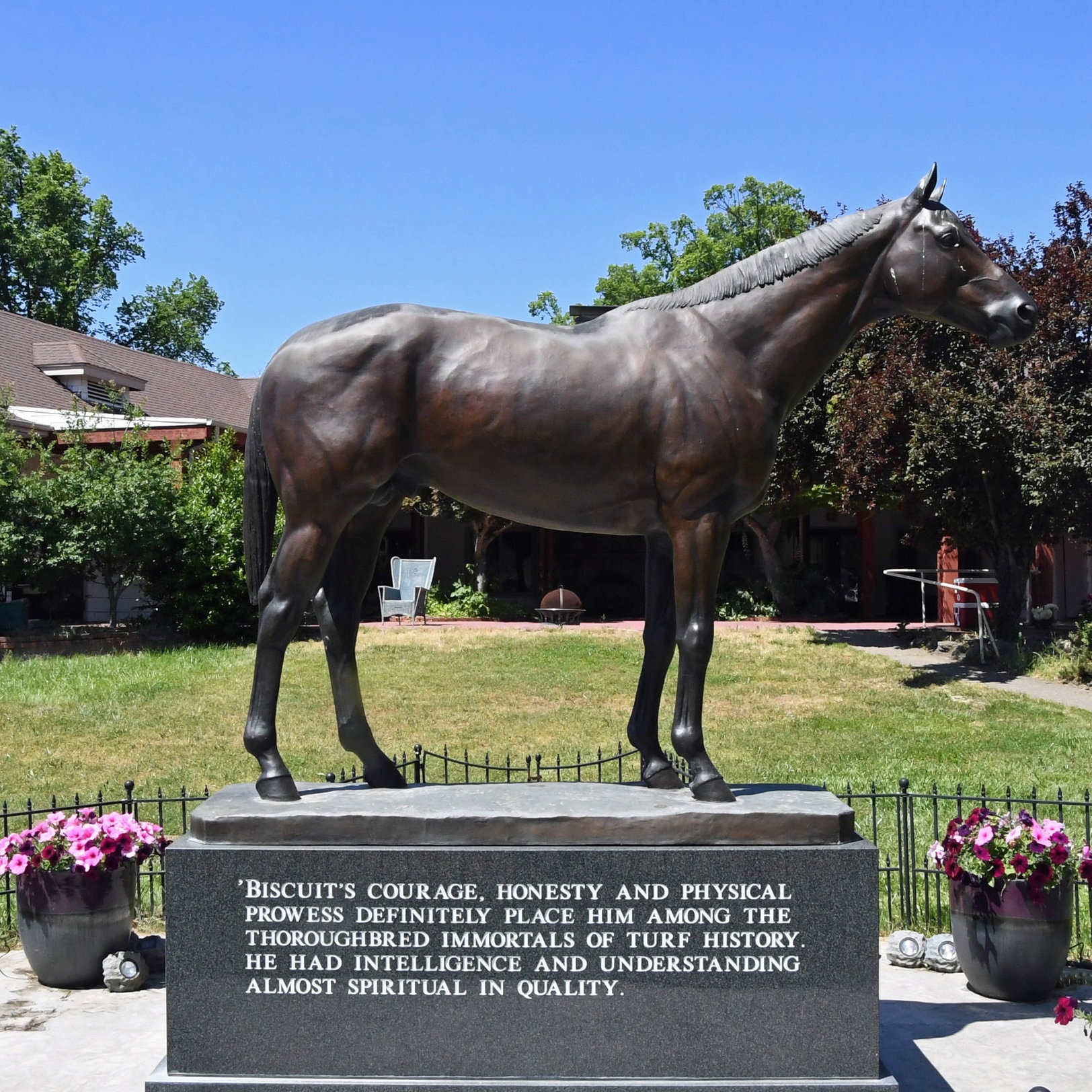



HOME OF SEABISCUIT
By: Tom Ferry
If you told somebody the story before they read the book or saw the movie, they wouldn’t believe you.
They would be skeptical that a beaten-down horse who won less than a quarter of his first 40 races could have inspired millions during the Great Depression. And if you told them both horse and jockey each suffered what was thought to be career-ending leg injuries yet would recuperate together and come back and win one of the richest races in history, they might have laughed out loud.
Yet it happened. And the faces and places were real.
While it has been more than 70 years since he walked the earth, there is no site where the spirit of Seabiscuit is more alive than at his longtime home of Ridgewood Ranch in Willits, California. Located 21/2 hours north of San Francisco on 5,000 acres of Northern California oak and redwood-studded hillsides, Charles S. Howard purchased this land as a cattle ranch and second home in 1919. One decade later, he had transformed a portion of the ranch into a Thoroughbred breeding and training operation. This included a 90-acre central area highlighted by several historic structures still present at Ridgewood. One, however, is more iconic than all the others — Seabiscuit’s Stud Barn. This wood frame building clad with red board and batten siding and white, flat-sawn window and door trim holds a special place in the annals of horse racing. It was here where Seabiscuit rehabilitated for the better part of 1939. It was here where he retired the following year after his thrilling comeback race in the Santa Anita Handicap and began a stud career, siring 108 foals. Visible in so many photographs, the barn was a destination for more than 50,000 visitors who came from 1940 until 1947. During the initial seven months of 1941, an incredible 33,072 people signed the guestbook outside his stall. Charles Howard posted a welcome sign at the entrance to the farm and built a small grandstand for visitors just outside the horse’s stall.
Listed in the National Register of Historic Places, Howard designed the barn specifically for Seabiscuit. The four stalls inside the barn, one in each corner, were originally accessed by four large paddocks, however, only the stalls remain today. Those stall doors are adorned with the names of great horses owned by the Howard family through the years including Noor, Kayak II, Ajax and of course, The Biscuit. The Howard family sold the total estate in the early 1960’s and the stud barn was restored in 2004 after many years of serving as a storage facility and printing office. There are several artifacts from the Howard era that are still present in the barn and these include the horse-and-rider weather vane on the roof and two red and white lawn jockey figurines.
Within view of the stud barn is the lavish, Craftsman style, one-time home to Charles and Marcela Howard. The home’s interior appears frozen in time, as if the Howards could walk in at any moment. In front of the home stands a beautiful bronze statue of Seabiscuit. It is a replica of the Ridgewood original which was moved to the National Museum of Racing and Hall of Fam in Saratoga Springs, NY.
Charles and Marcela had several Hollywood celebrity friends who were frequent visitors to Ridgewood including the likes of Bing Crosby, Clark Gable and Carole Lombard. Walk the grounds of the ranch and you’ll pass the pool where child star Shirley Temple learned to swim. The restored carriage house “housed” automobiles during the glory years and one can also see the bath houses once used by family and guests. There are the historic mare barns whose barn doors are still adorned with the iconic red, white triangle and “H” logo present on Howard racing silks.
Drive throughout the Ridgewood area and you might get lucky and see white or fallow deer which Charles Howard introduced to the area in 1949 when he purchased 53 of the deer from his friend William Randolph Hearst. The land is also home to several native species including the golden eagle and California mountain lion. When driving around the ranch, it is also sobering to know it is here where Howard’s 15-year-old son Frank was killed in a vehicle accident in May of 1926. The tragedy led Howard to fund the construction of the Frank R. Howard Memorial Hospital which opened two years later in Willits.
In 1962, Christ’s Church of the Golden Rule purchased the ranch and owns it to this day. They have taken steps to preserve the ranch’s historic and environmental value and restoration of historic buildings is ongoing. The ranch began giving historic tours in 2001 shortly after Laura Hillebrand’s award-winning Seabiscuit: An American Legend was published and they are available from June-September.
There is one thing visitors will not see: Seasbiscuit’s final resting place. On May 17, 1947, he died six days short of his 14th birthday. A heart-broken Charles Howard buried the horse at an undisclosed location on the grounds, somewhere under a newly-planted oak tree. The location of that tree remains a Howard family secret to this day. It doesn’t really matter, however, because visitors to Ridgewood Ranch will sense his presence everywhere.